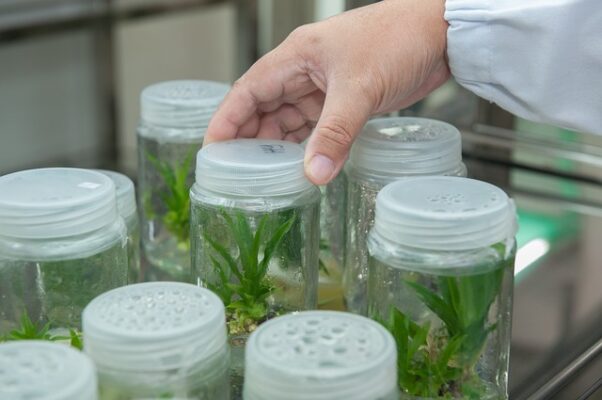A team of researchers from the Institute of Plant Molecular and Cellular Biology (IBMCP), mixed centre of the Polytechnic University of Valencia (UPV) and the Spanish National Research Council (CSIC) has taken another step to facilitate the genomic editing of plants. Their breakthrough will enable the use of CRISPR systems – genetic cut and paste whose father is Alicante-native Francis Mojica –, which opens the door to obtain new, more productive and nutritive varieties that are more resistant to plagues, pathogens and other environmental threats such as drought or extreme temperatures. The work of the IBMCP researchers has been published in The Plant Journal.
The new genome editing technologies derived from the CRISPR/Cas systems of bacteria and archaea make it possible to edit the genetic information of practically all organisms at will, which is representing a true revolution in the field of biotechnology. However, in the case of plants, the CRISP/Cas gene editing continues being a laborious process that requires time and a significant experimental deployment. Now, the breakthrough of the IBMCP researchers would make it easier and quicker.
“In plants, in order to express the reagents needed for the desired edition of the genome – typically a Cas nuclease and guide RNAs (sgRNA) –, there must previously be a genetic transformation of the plant tissue, usually with bacterium Agrobacterium tumefaciens. An alternative to streamline this process consists of using a line transformed with a Cas nuclease, for example Cas9, and expressing the sgRNAs with a viral vector,” explains José Antonio Darós, scientific researcher of the CSIC at the IBMCP.
In the editing process, nuclease Cas9 cuts the genomic DNA at the desired position guided by the sgRNAs. Thus, whereas Cas9 is a common element in all editing processes, sgRNAs change depending on the gen that is to be edited, which makes the process more difficult.
The solution revolves around the vectors derived from plant viruses which, thanks to their replication and movement abilities, can express high levels of sgRNAs in all the plant’s tissues in very little time. The IBMCP researchers have developed a new viral vector derived from virus X of the potato that enables the simultaneous expression of several sgRNAs in a simple and efficient way.
“The results of our research have shown how several sgRNAs can express themselves with this viral vector without having to separate them with signals to process them. Even so, high levels of editing are reached in all genes,” says Mireia Uranga, one of the study’s co-authors. The researchers of the IBMCP have also verified how new plants can be generated from the seeds of the plants infected by the vector with a perfectly edited genome which are free of the virus. “This type of technological progress will greatly streamline the obtention of new varieties of plants with improved nutritional and agronomic properties,” concludes José Antonio Darós.
Read the paper: The Plant Journal
Article source: R&I WORLD
Image credit: KENNETH RODRIGUES / Pixabay








